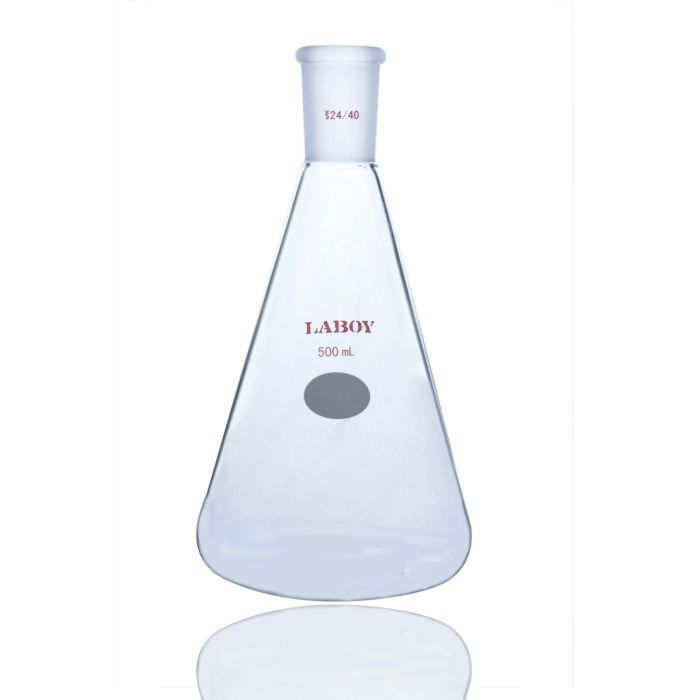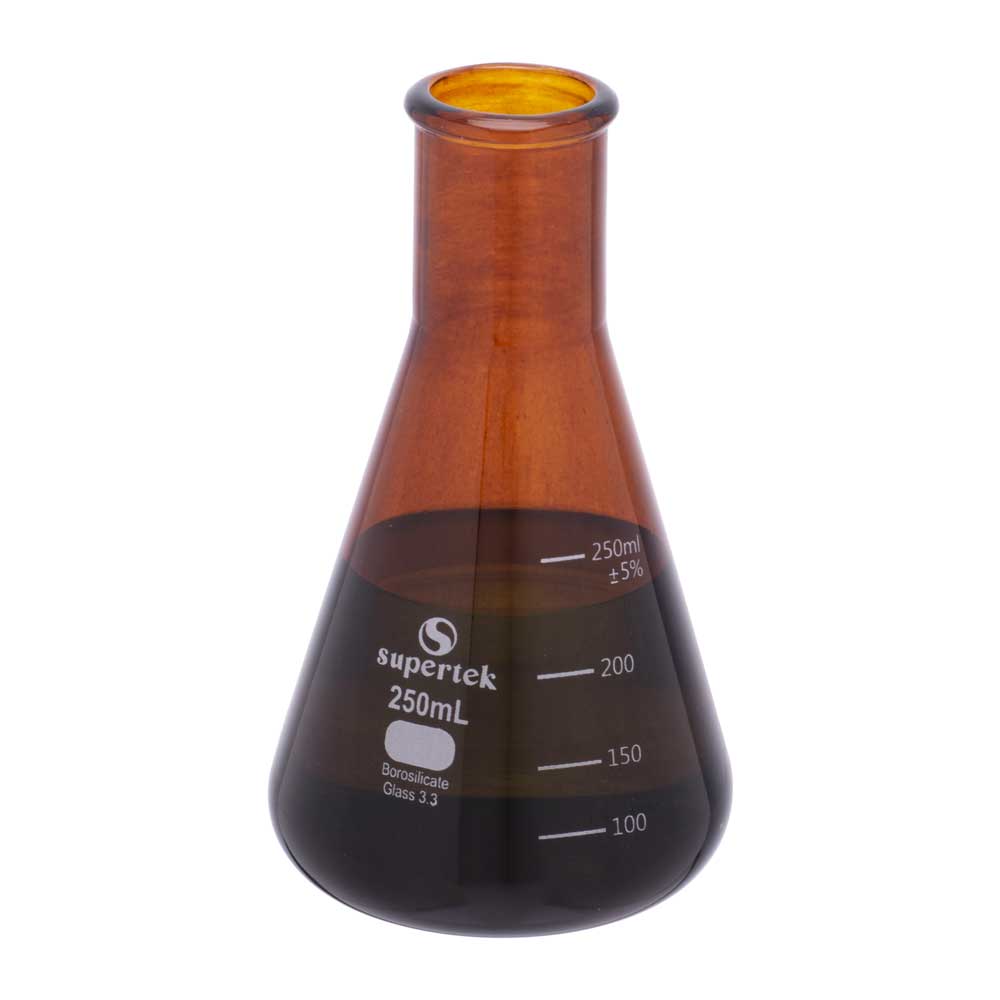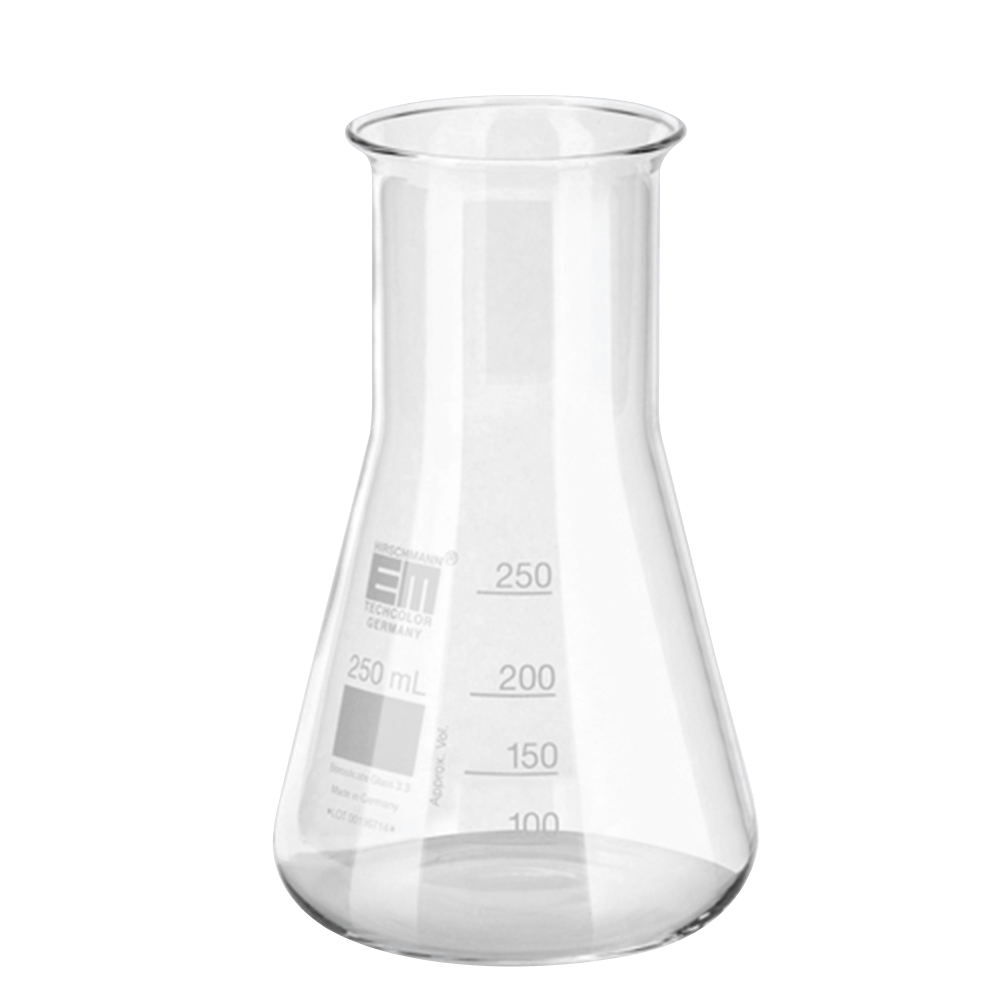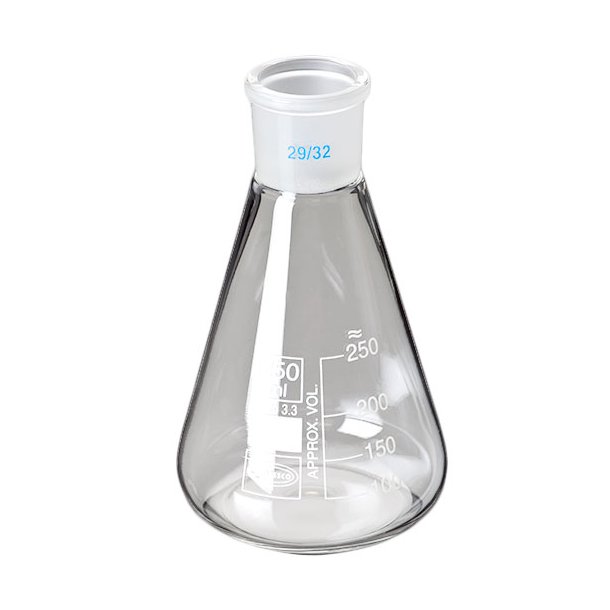Introduction to Erlenmeyer Flasks
The Erlenmeyer flask definition stands as a staple in laboratories. This glassware owes its name to Emil Erlenmeyer, who designed it in the 19th century. It is notable for its conical shape and wide base that narrows to a cylindrical neck. This design serves several practical functions in a lab setting. Often, scientists use Erlenmeyer flask definition for mixing chemical solutions or incubating cultures because of their shape. Their unique structure allows for easy swirling and mixing without spillage.
Evolution of Laboratory Flasks
Erlenmeyer flasks reflect the evolution of lab equipment. From early alchemy to modern chemistry and biology, laboratory flasks have changed to meet scientific needs. The Erlenmeyer flask, in particular, was a significant advancement. Over time, these flasks have advanced from simple glass containers to specialized tools in scientific research. Researchers have crafted these flasks from various materials and incorporated features like volume markings.
Types of Erlenmeyer Flasks
There are different types of Erlenmeyer flasks to cater to various lab activities. Basic Erlenmeyer flasks are common for general use. Some have graduations for measuring liquid volumes. Others, equipped with side-arms, are suited for vacuum filtration. For cell culture applications, flasks might feature baffled bottoms. Baffled flasks increase oxygen flow to the culture, which enhances cell growth. The selection of an Erlenmeyer flask depends on its intended laboratory use.

Benefits of Using Erlenmeyer Flasks in Cell Cultures
Erlenmeyer flasks play a crucial role in suspension cell culture. The unique design of these flasks offers several benefits that make them ideal for culturing cells. Scientists choose Erlenmeyer flasks for their enhanced mixing and aeration capabilities as well as their ability to prevent cross contamination—key factors in successful cell culture.
Enhanced Mixing and Aeration
Effective mixing is vital for cell growth. In cell cultures, cells must be suspended evenly in the medium. The conical shape of Erlenmeyer flasks allows for efficient swirling and mixing of the culture. This avoids cell settling and ensures uniform exposure to nutrients. Baffled flasks, with their rigged bottoms, improve oxygen flow into the liquid. More oxygen boosts cell metabolism, leading to improved growth and health.
In Erlenmeyer flasks, the narrow neck also helps regulate airflow. It lets in sufficient air without exposing the culture to contamination. This design ensures cells receive the necessary gasses while limiting the risk of airborne pollutants entering the flask.
Prevention of Cross Contamination
Maintaining a sterile environment is of utmost importance in cell cultures. Even a small instance of cross contamination can ruin an entire culture. Erlenmeyer flasks reduce this risk. Their narrow opening limits the exposure to the surrounding environment. Vented caps on plastic flasks further enhance this, allowing gas exchange while protecting against contamination. By using specific flask caps, like vented caps, researchers can better control the flask’s internal atmosphere. This careful control helps prevent contaminants from jeopardizing the cell culture.
Plastic vs. Glass Erlenmeyer Flasks
The debate between using plastic and glass Erlenmeyer flasks in suspension cell culture is ongoing. Each material has its pros and cons, which we will explore in this section.
Advantages of Plastic Flasks
Plastic Erlenmeyer flasks have several benefits that make them attractive for laboratory use. They are lighter in weight, making them easy to handle. Plastic is also less prone to breakage, reducing the risk of injury and contamination. This durability makes them ideal for high-volume labs with frequent handling.
In terms of contamination risk, plastic flasks often come with vented caps. These caps permit gas exchange while minimizing the potential for cross contamination. They are also disposable, which can prevent long-term bioaccumulation and simplify cleanup procedures.
Moreover, plastic flasks are available in various sizes, from small 125mL to large 5L volumes. Their flexibility is appreciated in labs that perform scale-up processes. Heat resistance is another factor; flasks made from PETG withstand higher temperatures and harsh conditions better than other plastic types.

When to Choose Glass Over Plastic
However, glass Erlenmeyer flasks are not without their merits. They are the go-to option when chemical resistance is a priority. Glass flasks can withstand aggressive chemicals that might degrade plastic. Additionally, glass provides a non-porous surface, which is easier to sterilize and less likely to harbor bacteria over time.
Glass flasks can be reused after proper cleaning, making them a cost-effective choice for labs on a budget. They also lend themselves to high-temperature applications such as autoclaving. For sensitive experiments, where extractables from plastics could be a concern, glass ensures a more inert contact surface for the culture.
In summary, the choice between plastic and glass Erlenmeyer flasks largely depends on the specific needs of the cell culture process, including chemical resistance, durability, and ease of sterilization. Labs must weigh the advantages of plastic against the enduring qualities of glass to decide which best supports their work.
Sizes and Varieties
Erlenmeyer flasks come in a broad range of sizes to suit diverse laboratory needs. From 125mL for small-scale experiments to large 5-liter flasks for industrial applications, there is a size for every requirement. The flexibility in volume allows these flasks to adapt to both educational settings and high-capacity laboratory environments.
Range of Sizes Available
The selection of Erlenmeyer flasks spans various sizes, ensuring a good fit for different uses. Small 125mL flasks are ideal for basic tests or when limited substances are in use. Intermediate sizes, such as 250mL and 500mL, are versatile for numerous lab processes. For larger scale experiments or cultures, flasks can measure up to 5L, providing ample space for cell growth and proliferation.
These flasks cater to the progressive nature of scientific experiments which often require scaling up from a small to a large batch. The existence of multiple sizes helps with consistency in experiment replication and scalability.
Choosing the Right Size for Your Application
Selecting the correct Erlenmeyer flask size is crucial for the success of any laboratory activity, especially suspension cell culture. Consider the volume of liquid medium needed, the density of the cell culture, and the projected growth when deciding on the size. Smaller flasks may suit initial growth stages, while larger ones can accommodate the culture as it expands. Balancing the need for efficient mixing and aeration with preventing overspill is key to choosing the right size.
Moreover, it’s important to account for the flask’s fill volume, often around half to two-thirds of the flask’s total capacity, to ensure proper mixing and aeration. Selecting a flask too small could lead to spills or insufficient gas exchange, while too large could cause inefficient mixing and potential waste of resources. By considering these factors, researchers can optimize the conditions for cell culture growth and maintain the health and productivity of the culture.

Setting Up a Suspension Cell Culture in Erlenmeyer Flasks
Creating a suspension cell culture in an Erlenmeyer flask is a straightforward process. When done correctly, it supports optimal cell growth and replication. The key to success is meticulous attention to detail throughout the setup.
Step-by-Step Setup Guide
- Choose the correct size of the Erlenmeyer flask. This depends on your culture volume and growth expectations.
- Sterilize the flask and medium. Use proper techniques to avoid contamination.
- Add the cell culture medium to the flask. Do not fill more than two-thirds of the volume.
- Introduce the cells into the medium gently. Ensure they are evenly distributed.
- Place the flask on an orbital shaker. This facilitates constant mixing and aeration.
- Set the orbital shaker to the right speed. Avoid too fast motions that may harm cells.
- Monitor the pH and temperature regularly. These are critical for cell health.
- Use vented caps if needed for gas exchange. This helps prevent contamination.
Tips for Maintaining Culture Health
- Check the culture daily. Look for signs of contamination or unusual cell behavior.
- Adjust the shaker speed as necessary. Find the balance for proper mixing without damage.
- Regulate environmental conditions. Keep a constant temperature and pH for the culture.
- Change the medium regularly. This maintains nutrient levels and removes waste.
By following these steps and tips, you establish a strong foundation for successful cell culture growth in Erlenmeyer flasks. With proper monitoring and maintenance, your suspension cultures will thrive, providing the desired outcomes for your research or production needs.
Advanced Uses of Erlenmeyer Flasks
Erlenmeyer flasks find diverse applications beyond basic laboratory settings. Their design enables them to handle complex tasks in both experimental and industrial environments.
Scale-Up Processes
Scale-up processes in biotechnological and pharmaceutical fields often utilize Erlenmeyer flasks. The ability of these flasks to facilitate effective mixing and aeration makes them ideal for increasing the production of cell cultures from a small sample to a larger volume systematically. Their availability in a range of sizes from 125mL to 5L permits gradual scaling, which is crucial during the developmental stages of product formulation. This ensures consistency in the replication of experimental results.
Experimental and Industrial Applications
In experimental biology, Erlenmeyer flasks are crucial for conducting tests that require precise environmental control. Their narrow neck design reduces the risk of contamination, which is vital in sensitive experimental setups. Industrially, these flasks are used in the mass production of pharmaceuticals, where large volumes of cultures are needed. The durability of plastic Erlenmeyer flasks, especially those made from PETG, withstands harsher industrial conditions and frequent handling. This adaptability makes them a preferred choice in settings that demand robustness and reliability.
